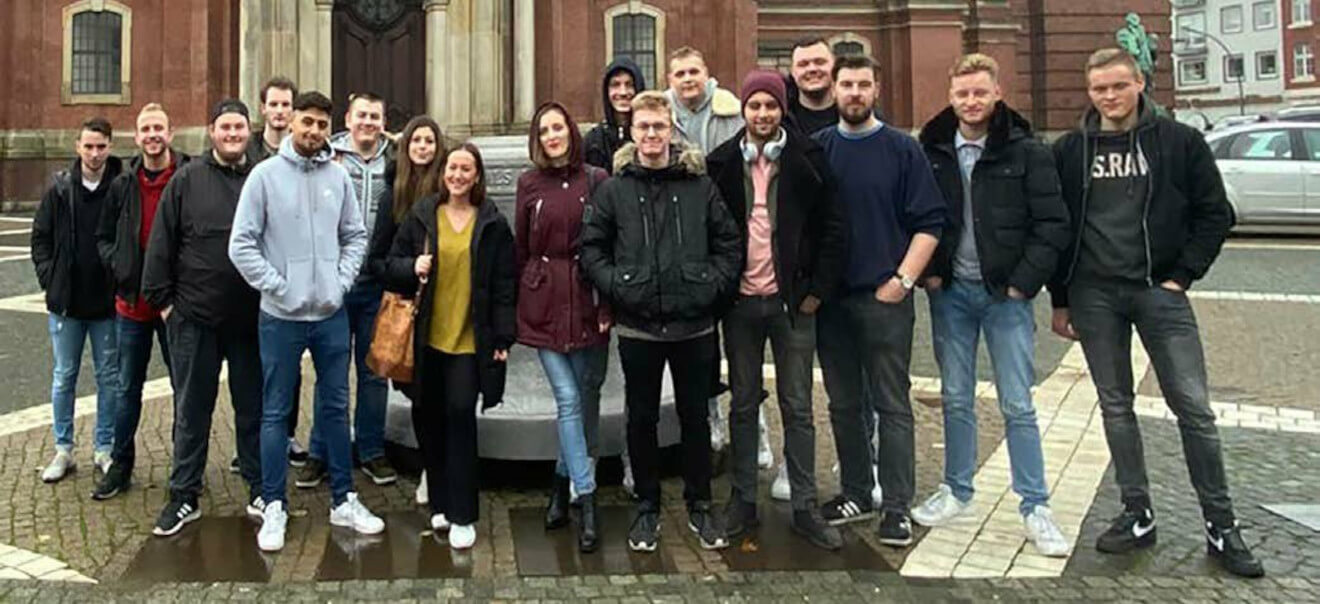Tour of the terminal with supporting programme to get to know each other

At the end of last year, MBS Logistics trainees from various locations undertook a joint trip to Hamburg. The focus of the trip was a visit to a terminal in the port of Hamburg, embedded in a supporting programme of sightseeing and leisure time for mutual exchange and getting to know each other. Under the direction of Vincent Brüning, Maximilian Peters and Antonia Luhr, who had also organised the trip, there was no chance of boredom. The trainees have summarised their experiences themselves in a short report:
“After a joint dinner at Blockbräu and a stroll through Hamburg at night, we visited the Hamburg Michel the next morning and then continued by bus to the Miniatur Wunderland. We were very impressed by the largest model railway layout in the world, which covers an area of almost 1500 square meters. Over a distance of 15 kilometres there are tracks on which over 1000 trains run. On a scale of 1:87 different parts of the world have been reproduced, such as the city of Hamburg, parts of Austria, Italy and America. In addition, there are many hidden actions and everyday situations to be discovered, which are triggered by buttons or simply hidden directly in front of the eyes of the viewer. It was especially surprising to see that the Miniatur Wunderland simulates day and night every 15 minutes.
Before the terminal visit we went to a restaurant near the port, from where we took the bus to the CTA terminal. Once there, Michael Rudnik, the Executive Manager Sales of the CTA terminal, explained the various processes of the terminal to us using a model. We were very surprised that the majority of the processes run completely automatically, only for loading from the block storage to a container ship or truck is monitored and controlled by a team from the terminal’s Mission Control Tower. All other processes, such as the sorting of the containers in the block storage or the container movements within the terminal, are controlled by a system. The containers are sorted by an algorithm that pre-sorts the containers according to the available data, usually overnight – to the land side for further transport by truck or to the sea side for further transport by container ship. The container movements between the eight different block stores are handled by so-called AGVs (Automatic Guided Verhicle). These 15-metre long automated container vehicles constantly move back and forth between the quay wall and the storage areas. Most of them still run on diesel, but soon they will be converted to electrically operated AGVs. All operated wagons can autonomously log out of the system and refuel or recharge.
After this theoretical introduction, we went to the terminal by bus together with Michael Rudnik and were able to see the automated processes with our own eyes.
All in all, it was a very exciting trip, which not only gave us the knowledge about model railways and the CTA terminal, but also strengthened the cohesion between the trainees of all locations. Thank you very much for that.”
Author
Tobias Vieten, Marc Reimann, Philipp Heythausen, Azubis / Trainees MBS Düsseldorf
Marius Bolten, Student / Student, MBS Köln / Cologne

 MBS ANYTIME 24/7
MBS ANYTIME 24/7